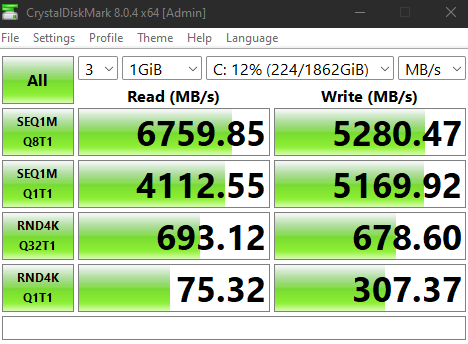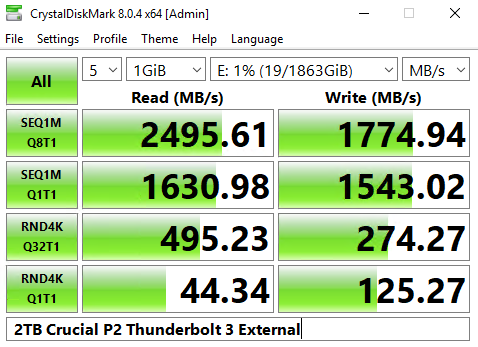The Beauty and Disappointment of Multi-Gig Networking
- Tactical Capacitor
- Aug 10, 2022
- 3 min read
A couple of years ago I published an article (Breaking the LAN Speed Barrier) outlining the procurement process, deployment requirements, setup steps and benefits of outfitting an existing home network with Gig+. This was otherwise a network backbone that is faster than the decades-old 1GbE standard. The concept of FINALLY getting past that anemic bottleneck in a modern compute environment, especially with the dawn of so many blazing fast local data storage/transmission speed upgrades such as PCIe 4/5, NVMe, USB 3.2/4.0 and Thunderbolt 3/4 being huge leaps forward effectively eliminating the previous traditional bottlenecks of local storage and I/O killing the performance the rest of your PC had... was mind-blowing.
COLOR LEGEND:
Color | Speed |
Red | Legacy (Terrible) |
Orange | Nothing to brag about |
Yellow | Not great but marginally impressive standard |
Green | Current speeds 2022 humans should be entitled to |
Blue | Amazing speeds market isn't matured for yet |
Purple | Monster speed; but market can still double (PCIe5) |
A couple of years later, that foundational upgrade has finally become matured enough that I have been able to fully realize the real-world benefits of Gig+ networking in my day to day life. At first, between driver issues in 2.5GbE+ NICs, to low-end USB 3 gen1 (5Gb/s limit) storage mediums usually being where data gets transferred over the network which meant marginal speed increases at best, the only benefits I had were peace-of-mind and synthetic benchmarks under perfect conditions between the only 3 devices I had that could do 2.5Gb+ speed.

And strangely, getting to see transfer speed charts and current monitored KB/s metrics shoot up to that full Gig+ speed across most of my modern appliances now when transferring huge gobs of data (which is very common at my place honestly), is a little disappointing. I think simply because of this new era of speeds and standards doubling and quadrupling literally every couple of months right now (aka the DDR4>DDR5, PCIe4>PCIe5, Wifi 6>Wifi 6E, USB 3.2 [5/10/20Gb]>USB 4.0 [40Gb] standards that barely even had time to release before each successor got pushed out), nothing is AS impressive as it seems when you allow technologies to sort of 'bake' into the marketplace before updating immediately. However, this is different. Yet we're strangely in the exact same place we just were historically again- back to the era of 'networking is the bottleneck of home compute environments'. Suddenly, with 20Gb/s real-world USB and Thunderbolt speeds with NVMe SSD enclosures (40Gb/s is theoretical but no Thunderbolt/USB4 controller on the market can push much past 20Gb/s even with the fastest SSDs that do WAY more than even 40Gb/s now), a dinky little 2.5GbE standard or 2.4Gbps Wifi 6 speed is snailpace again.
When compared to the local host speeds of PCIe4 NVMe (6750MB/s) you can get on a modern PC, none of even the theoretical Thunderbolt/USB4/Multi-Gig-networking speeds really look all that impressive.
I knew this from the start as I upgraded my network. 802.3bz standards (2.5GbE and 5GbE) seemed to be aimed squarely at the consumer market to eek out whatever they could from customers to have to artificially update their networks every couple of years, instead of just giving us the same 10GbE standard the enterprise has had for well over a decade at this point. So I was aware this was never going to be mind blowing, but the idea of increasing my home's last bottleneck be 2.5x the speed it once was (2.5GbE), was and still is really really appealing. I'm glad I did it, it is a joy to watch a massive 1.6TB transfer take only a couple hours instead of having to wait overnight, but it's still so, so much slower than what is actually technically available on the market right now.

But overall, no matter how disappointing it is against the raw speed capabilities out there in the market right now, we're moving in such a great direction for the consumer tech world, and watching previously impossible transfer speeds of over 250MB/s actually happen, is a sight to behold for any number-loving techie out there.




Hello German engineers. If you are seeking CDR Writing Services in Germany for Engineers Australia, your search ends here. Contact CDRAustralia.Org for professional support located in Germany, and we guarantee a top-quality CDR Report that will secure a 100% approval rate from Engineers Australia.